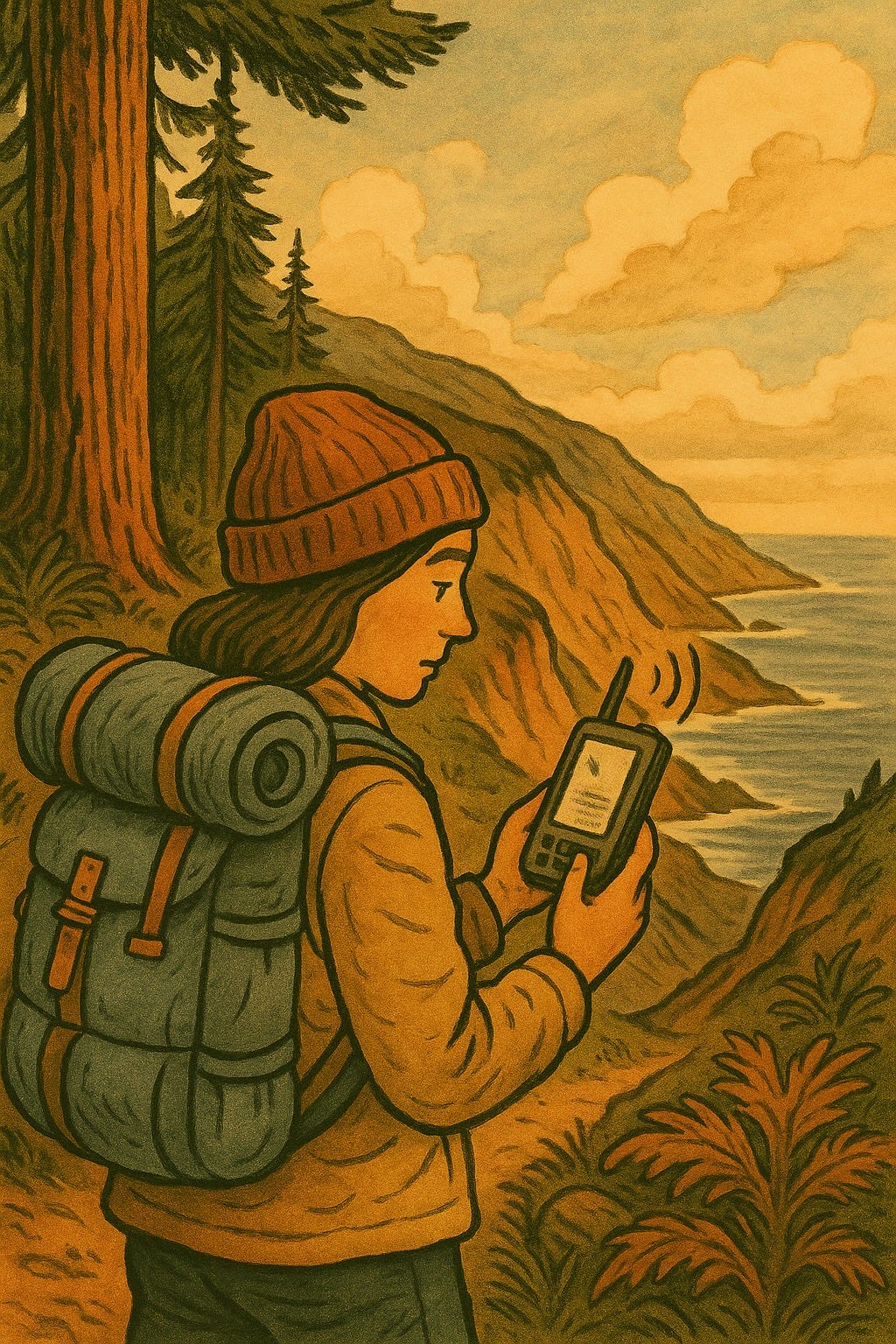Off the Grid, Not Out of Reach: A Quick Guide to Satellite Messaging
Compare the Best Satellite Messaging Devices for Hiking, Backpacking, and Off-Grid Safety in 2025
In a 2017 Outside Magazine survey of 2,100 women who spend time outdoors, 66% reported feeling afraid for their safety. Anyone reading this—especially women—probably isn’t surprised. When I’m alone on a remote trail with no way to call for help if something goes wrong, it’s a little scary.
Why Satellite Communication Is Essential for Solo Hikers
As someone who loves solo backpacking and remote hiking, I don’t want to be chatting on my phone (or in person) while I’m outside. I just want to feel alone in nature—while still knowing I can get help if I need it.
Personally, I look for two things in any safety tool:
The ability to contact emergency services
A way to message friends when I choose—without needing real-time back-and-forth
That’s where satellite messaging devices and phones comes in.
What Is Satellite Messaging?
Satellite messaging lets you send texts, trigger SOS alerts, and share your GPS location—all without cell service. Instead of relying on nearby cell towers, your message pings a satellite in orbit and beams back down to Earth.
It’s slower than normal texting, but it works anywhere you have a clear view of the sky—even deep in the backcountry.
This used to require a standalone device like the Garmin inReach. But now, some smartphones have satellite hardware built right in, making it easier (and lighter) to stay safe off-grid.
When I found out that iPhones now support satellite messaging, I upgraded almost instantly. Managing a separate device and subscription had always been a hassle—and honestly, I’d stopped bothering after a few years because I didn’t use it enough and it was expensive. Now that it’s built right into my phone, it’s so easy to say yes.
Best Satellite Messaging Options for Hikers in 2025
The phone tech is still fairly new and only works under certain conditions. Phones need built-in satellite hardware—which is becoming standard—and carrier support.
What makes Apple and Google unique here is that they’ve built both the hardware and the satellite service into their own devices. That means iPhones and Pixel phones can offer satellite messaging directly, without relying on traditional carriers like Verizon or AT&T to support the connection.
In contrast, other manufacturers (like Samsung) still depend on carrier partnerships to make satellite features work—which is why, for example, satellite messaging is only available on certain Samsung phones for Verizon customers.
All devices seem pretty comparable in terms of where/how they work (Youtube Overview).
Here’s a breakdown of the top emergency messaging tools for solo hikers and backpackers in 2025.
Apple iPhone 14 and Newer (Emergency SOS via Satellite)
Like I mentioned before, this is why I upgraded my phone in December—that’s sadly when I heard about this. I upgraded to the 14—which my brother-in-law insists doesn’t count as a real upgrade since it’s not the latest iPhone model—for the Emergency SOS via satellite functionality. You can send emergency texts, regular texts, or share your location as long as you have a clear view of the sky. Satellite messaging is available on iPhone 14+ models.
I’ve talked to a bunch of girlfriends who upgraded just for this feature. The biggest downside for most of us? The iPhone Mini—which fits in tiny pockets and tiny hands—is only supported through the iPhone 13. Apple, if you’re listening: please fix this.
It’s free for the first two years. Pricing after that hasn’t been announced yet.
👉 Learn more about Apple’s Satellite Messaging or Emergency SOS
Google Pixel 9 Series
The new Pixel 9, Pixel 9 Pro, and Pixel Fold offer built-in emergency satellite messaging. While I haven’t used this one personally, it supports off-grid emergency texting and is also free for the first two years.
Samsung Galaxy S25 (Verizon Only)
Some models of the Galaxy S25 support satellite messaging with the same features as the Pixel—but only for Verizon customers. Features include emergency texts and GPS location sharing.
👉 Learn more on Samsung & Verizon Partnership
Garmin inReach (Best for Extended Backcountry Use)
If you want more than just emergency messaging, Garmin’s inReach devices are still the best-in-class. Garmin offers two-way satellite communication that works with anyone, an SOS button linked to a 24/7 global response center, and live GPS tracking so friends can follow your route in real time. You also get offline maps and navigation tools, plus a long-lasting battery that operates independently from your phone.
Downside? You’ll need to spend hundreds on the device plus pay for a subscription separate from your phone. Again, this was a dealbreaker for me.
👉 Explore Garmin inReach Options
Choosing the Best Satellite Messenger for Hiking & Backpacking
If you mostly day hike or go on backpacking trips for just a few days, the built-in satellite messaging options from Apple and Google strike a great balance of safety and simplicity. For longer or more rugged expeditions, Garmin remains the most trusted name in the backcountry.
💡 Pro Tip: Always test your satellite messaging device or phone before heading out—signal strength and setup can vary by location.
Final Thoughts: Don’t Let Safety Hold You Back
Don’t be held back from the outdoors because of safety concerns! With tools like satellite messengers for solo hiking, we all can explore confidently :)











